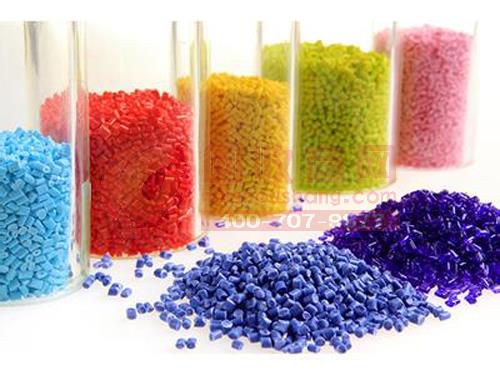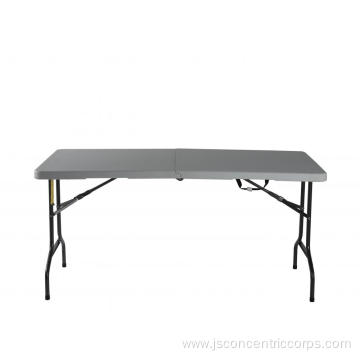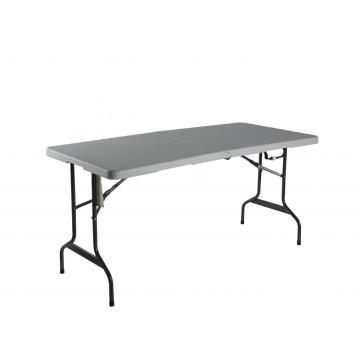Inventory: List of commonly used plastic shrinkage tables
![]() September 06, 2022
September 06, 2022

Shrinkage is the percentage of the difference between the dimensions of the part at the forming temperature and the size of the part after it is removed from the mold and cooled to room temperature. It reflects the extent to which the part is reduced from the mold after it has been cooled. The factors affecting the shrinkage rate are: material variety, molding conditions, mold structure, etc., and the shrinkage rates of different materials are different. The shrinkage rate also has a great relationship with the shape of the plastic part, the complexity of the internal structure, and whether or not there is an insert.
First, the introduction of shrinkage rate
Thermoplastics are characterized by swelling after heating and shrinking after cooling. Of course, the volume will also shrink after pressurization. In the injection molding process, the molten plastic is first injected into the mold cavity, and after the filling is completed, the melt is cooled and solidified, and shrinkage occurs when the plastic part is taken out from the mold, and the shrinkage is called molding shrinkage. When the plastic part is taken out from the mold to the stable period, the size will still change slightly. One change is to continue to shrink, and the other change is that some hygroscopic plastics expand due to moisture absorption, but the main function is Molding shrinkage.
Second, the impact of plastic structure and properties
For the wall thickness of the molded part, the shrinkage rate is also large due to the long cooling time of the thick wall. For the general plastic part, the difference between the size along the direction of the melt and the dimension perpendicular to the flow direction of the melt is large. At the same time, the difference in shrinkage ratio is also large. From the viewpoint of the flow distance of the melt, the pressure loss from the gate portion is large, and thus the shrinkage rate at this point is also larger than that near the gate portion. Because of the shrinkage resistance of the ribs, holes, bosses, and engravings, the shrinkage of these parts is small.
1) Effect of plastic structure on shrinkage of products
(1) Thick-walled plastic parts have higher shrinkage than thin-walled plastic parts (but most plastic 1mm thin-walled parts have a larger shrinkage than 2mm, which is due to the increased resistance of the melt in the cavity);
(2) The shrinkage ratio of the insert with the insert on the plastic part is smaller than that without the insert;
(3) The shape of the plastic part is complicated, and the shrinkage rate is simpler than that of the simple shape;
(4) The height direction of the plastic part is generally smaller than the horizontal direction;
(5) The shrinkage rate of the elongated plastic part in the longitudinal direction is small;
(6) The dimension in the longitudinal direction of the plastic part is smaller than the shrinkage ratio in the thickness direction dimension;
(7) The inner hole shrinkage rate is large, and the shape shrinkage rate is small.
2) Effect of plastic properties on shrinkage of products
(1) The shrinkage rate of crystalline plastics is greater than that of amorphous plastics;
(2) Plastics with good fluidity, low molding shrinkage;
(3) Adding filler to the plastic, the molding shrinkage rate is significantly reduced;
(4) The same plastics in different batches have different molding shrinkage rates.
Third, the impact of mold structure
The gate form also has an effect on shrinkage. When a small gate is used, the shrinkage of the plastic part is increased because the gate is solidified before the pressure is maintained. The cooling circuit structure in the injection mold is also a key in the mold design. If the design of the cooling circuit is improper, the shrinkage is caused by the uneven temperature of the plastic parts, and the result is that the size of the plastic part is poor or deformed. In the thin-walled part, the influence of the mold temperature distribution on the shrinkage rate is more pronounced. There are four points:
Effect of plastic mold structure on heat shrinkage rate
(1) The gate size is large and the shrinkage rate is reduced;
(2) The vertical gate direction shrinkage rate is reduced, and the parallel gate direction shrinkage rate is increased;
(3) The shrinkage rate away from the gate is smaller than that of the near gate;
(4) The shrinkage rate of the plastic part having the mold restriction is small, and the shrinkage rate of the unrestricted plastic part is large.
Fourth, the influence of molding process on the shrinkage rate of plastic products
(1) Barrel temperature: When the temperature of the cylinder is high, the pressure transmission is good and the contraction force is reduced. However, when a small gate is used, the shrinkage rate is still large due to the early curing of the gate. For wall-thick plastic parts, even if the barrel temperature is higher, the shrinkage rate is still large.
(2) Feeding: In the molding conditions, the feeding is minimized to keep the size of the plastic parts stable. However, if the feed is insufficient, the pressure cannot be maintained, and the shrinkage rate is also increased.
(3) Injection pressure: The injection pressure is a factor that has a large influence on the shrinkage rate, especially the pressure holding pressure after the filling is completed. Under normal circumstances, when the pressure is large, the density of the material is large, and the shrinkage rate is small.
(4) Injection speed: The injection speed has little effect on the shrinkage rate. However, when the thin-walled plastic parts or gates are very small, and when the reinforcing material is used, the injection speed is increased and the shrinkage rate is small.
Mold temperature: Generally, the shrinkage rate is also large when the mold temperature is high. However, for thin-walled plastic parts, if the mold temperature is high, the flow resistance of the melt is small, and the shrinkage rate is rather small.
(5) Molding cycle: There is no direct relationship between the molding cycle and the shrinkage rate. However, it should be noted that when the molding cycle is accelerated, the mold temperature, the melt temperature, and the like are also inevitably changed, thereby affecting the change in the shrinkage rate.
(6) Mold temperature: the higher the mold temperature, the greater the shrinkage rate
V. Common plastic shrinkage rate
The following are commonly used plastic shrinkage rates:
<- Previous: How to improve the heat resistance of PVC plastics? Plastic experts teach you 7 strokes to get all done
- Next: Read the hollow blow molding machine in one article: blow molding method, process classification and characteristics, and influencing factors

Pay attention to the recycler network WeChat public platform, you can enjoy unprecedented VIP-level enjoyment, daily push quotes, asset disposal, auction bidding and other massive information, and all this is free! What are you waiting for, pay close attention to me!
Disclaimer:
● This content is from the Internet and does not mean that the Recycling Network is in favor of this content or position.
● The above information is collected by China Recycling Network (). If there is any reprint, please indicate the source, thank you for your cooperation!
Online message
- Contact:Please enter a contact
- Contact information:Please enter your contact information
- Message content:
Popular recommendation
relevant information
- 2018/4/14 most complete black steel research term explanation
- 2018/3/13 What kind of machine tool probe can achieve low cost and high efficiency?
- 2018/3/2 What should I pay attention to when buying a scrap crusher?
- 2018/2/28 machine tool collision reason is revealed!
- Starting after 2018/2/27 , is your machine repaired ?
- What is the difference between the 2018/2/26 reactor seal and the pump seal?
- 2018/2/26 old vehicles, yellow label cars are self- deprecating , how much is the subsidy?
- Installation and use of 2018/2/26 reactor
- 2018/2/26 high speed cutting CNC lathe common faults and solutions!
- 2018/2/24 identifies five types of Daewoo DH220LC-5 and Doosan DH220LC-7...
- 2018/1/18 to buy used excavators, you must pay attention to these details!
- 2018/1/17 excavator bursting tube is not afraid! 7 major reasons, 2 remedies are absolutely!
- 2017/12/31 China's large steel enterprises, steel groups, steel bases
- 2017/12/21 What should I do if the machine tap is broken?
Waste materials network used equipment network used equipment transfer used equipment recycling machine tool equipment auction assets auction whole plant equipment auction chemical equipment auction
Alphabet search: A B C D E F G H I J K L M N O P Q R S T U V W X Y Z
About Us | Enterprise Qualification | Help Center | Advertising Service | Member Service | Newbie Guide | Site Map | Payment Method | Comment Complaint | Links | Customer Service Center
Customer Service Hotline Fax E-mail: Address: 6F, Block C, Tianshan Yinhe Plaza, No. 168, Changjiang Avenue, High-tech Zone, Shijiazhuang
Copyright ©2008-2018 HuiShouShang.Com Inc.All Rights Reserved. China Recycling Network Copyright
Value-added telecommunications business license 冀B2-20170010 冀ICP备09021528号
| Abbreviation | Chinese | proportion | Shrinkage(%) | Barrel temperature | Mold temperature |
| LDPE | Low-density polyethylene | 0.92 | 3 | 220~260 | 20~40 |
| HDPE | High-density polyethylene | 0.96 | 3 | 190~280 | 30~70 |
| PP | Polypropylene | 0.91 | 2 | 210~280 | 20~50 |
| PVC | Polyvinyl chloride | 1.38~1.41 | 1.5 | 170~190 | 20~40 |
| aBS | Propylene-butadiene-styrene | 1.05 | 0.6 | 210~260 | 50~80 |
| aS | Propylene-styrene | 1.07 | 0.6 | 220~270 | 40~80 |
| BS | Butadiene-styrene | 1.01 | 0.5 | 190~230 | 30~50 |
| GPPS | General purpose polystyrene | 1.16 | 0.3~0.6 | 200~250 | 40~60 |
| HIPS | High impact polystyrene (to change benzene) | 1.08 | 0.5 | 210~270 | 20~50 |
| EVa | Ethylene vinyl acetate | 0.95 | 2 | 140~200 | 20~40 |
| PMMa | Polymethyl methacrylate | 1.18 | 0.6 | 220~240 | 60~80 |
| Pa6 | Polyamide-6 | 1.13 | 0.7-1 | 250~270 | 40~60 |
| Pa66 | Polyamide-66 | 1.13 | 1.3 | 280~300 | 40~60 |
| Pa66+30%GF | Polyamide-66+30% glass fiber |
The above is the Inventory: List of commonly used plastic shrinkage tables we have listed for you. You can submit the following form to obtain more industry information we provide for you.
You can visit our website or contact us, and we will provide the latest consultation and solutions
Send Inquiry
Most Popular
lastest New
Send Inquiry









